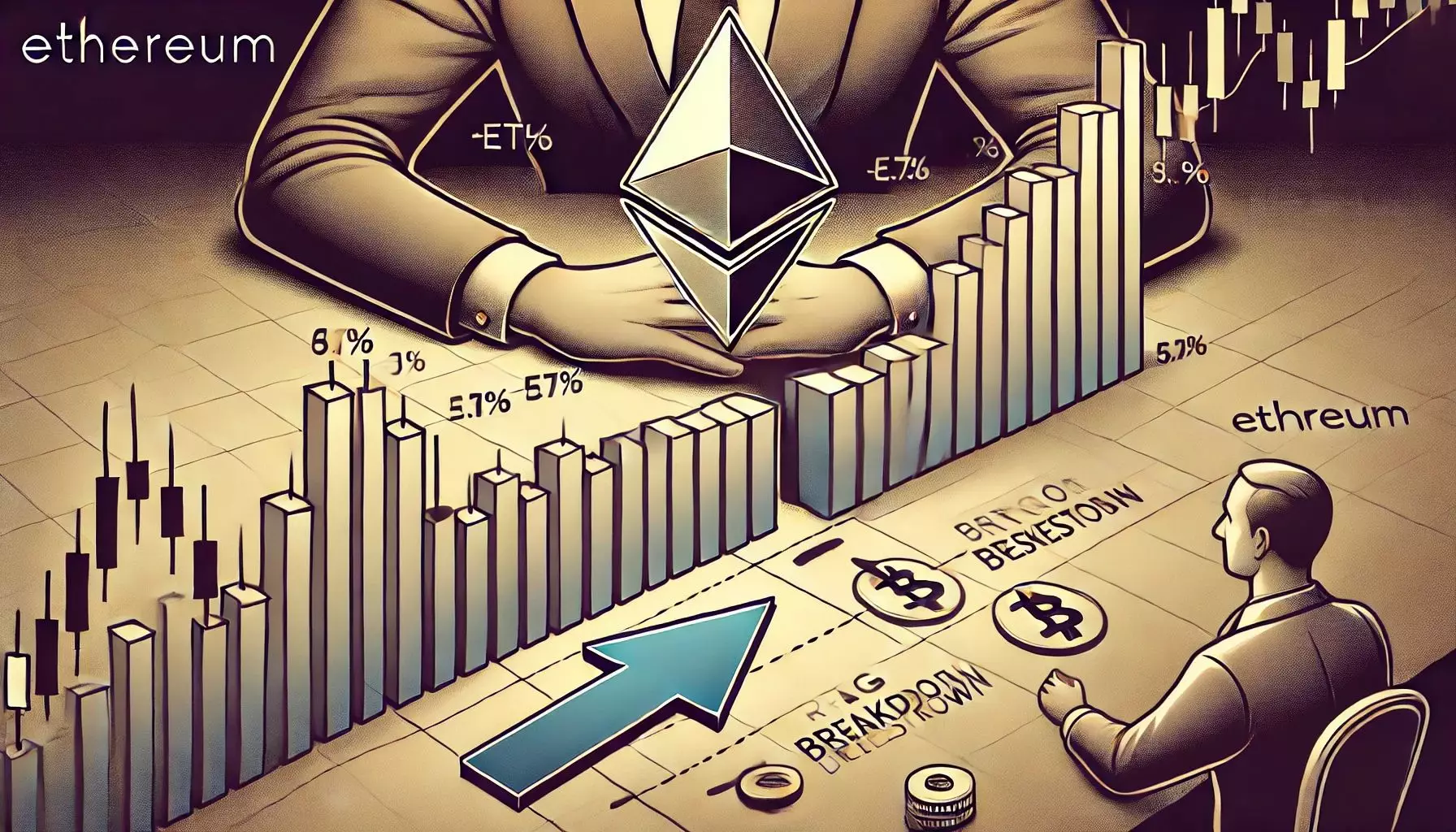Ethereum, long hailed as a revolutionary technology in the world of decentralized finance, finds itself at a crossroads. Its current trading situation resembles a dire predicament, with prices hovering around the $1,580 mark after retreating from a critical resistance level of $2,000. This decline is indicative of more than just market fluctuations; it mirrors a larger narrative of investor uncertainty and waning market confidence. With Ethereum recording a staggering 21% decline from its previous high, one can’t help but contemplate the existential threats this cryptocurrency faces.
The market is shrouded in confusion, as both buyers and sellers display a noticeable lack of conviction. Analysts describe the current price action as a period of extreme compression—a term that hints at either an impending breakout or breakdown. Historically, such tight trading ranges precede significant movements, and traders are left anxiously awaiting indications of which direction Ethereum will take. But with no clear signs emerging, the atmosphere is thick with doubt.
The Macro Storm: Political and Economic Headwinds
The current state of Ethereum cannot be divorced from the broader macroeconomic climate. Global trade tensions, particularly the ongoing US-China trade war instigated by Trump’s administration, cast a long shadow over investor sentiment. Despite a supposedly temporary 90-day pause on tariffs, optimism remains elusive. The unresolved nature of these trade discussions only exacerbates the already complex landscape for risk assets like Ethereum, making the future look even more tumultuous.
Market volatility has become a persistent theme, with Ethereum unable to gain footing in the chaos. Some may argue that this volley of political uncertainty makes the case for embracing cryptocurrencies stronger than ever, as they promise a degree of autonomy from traditional financial systems. However, the reality is stark: Ethereum’s perceived value is tethered to the whims of the larger economy, and this correlation represents a double-edged sword.
The Psychological Barrier: A $2,000 Odyssey
Achieving the $2,000 threshold is not just a numerical milestone; it symbolizes a psychological barrier that has eluded Ethereum during this volatile period. For the bulls—those optimistic about Ethereum’s future—the road to recovery is lined with critical resistance levels. Currently, ETH must contend with the steadfast support at $1,550 and resistance near $1,700—even more daunting is the looming $2,000 mark.
Traders and investors are itching for a definitive movement: a breach above $1,850 could usher in renewed bullish momentum, while a drop below $1,500 may spell disaster. The enthusiasm surrounding Ethereum’s vast technological potential is met with skepticism when faced with practical realities. Investors question whether Ethereum can indeed break free from its past and emerge stronger, or if it is simply heading towards a deeper corrective phase.
Compressed Chaos: The Waiting Game
As the wait continues for a decisive move, Ethereum remains obscured by a veil of low volatility. Days pass with Ethereum trading sideways, a pattern that leaves traders restless and anxious. This period of compressed price action often transitions into explosive movements—yet the question remains: will this explosion be upward or downward?
In the eyes of many analysts, the tension building behind the scenes could be likened to a coiled spring, ready to unleash its potential in either direction. However, amidst this anticipation lies the austere reality that trading in a compressed environment can lead to drastic consequences, especially when factors like macroeconomic instability loom large. The ongoing debate in the investment community revolves around the feasibility of Ethereum surmounting its significant obstacles.
A Divergence of Sentiments: Bullish vs. Bearish
The sentiment surrounding Ethereum encapsulates a wider divergence of perspectives in the cryptocurrency space. On one hand, bullish analysts tout Ethereum’s intrinsic value as a cornerstone of decentralized finance and smart contracts. They emphasize the network’s upgrades, potential scalability solutions, and the burgeoning interest in NFTs as reasons for optimism.
Conversely, the bearish camp highlights the unsettling reality of frequent price corrections, external economic pressures, and the risk associated with high-volatility assets. They argue that until Ethereum establishes a solid foundation of support and can confidently claim the $2,000 mark, any efforts towards bullish recovery are nothing more than wishful thinking.
Therefore, Ethereum stands at an intriguing crossroads. Is it poised for a miraculous recovery, or are we witnessing the slow unraveling of what was once heralded as an indomitable titan of the cryptocurrency realm? Whatever the outcome may be, the stakes are astronomically high, and uncertainty is the only constant in this competitive digital landscape.


Leave a Reply